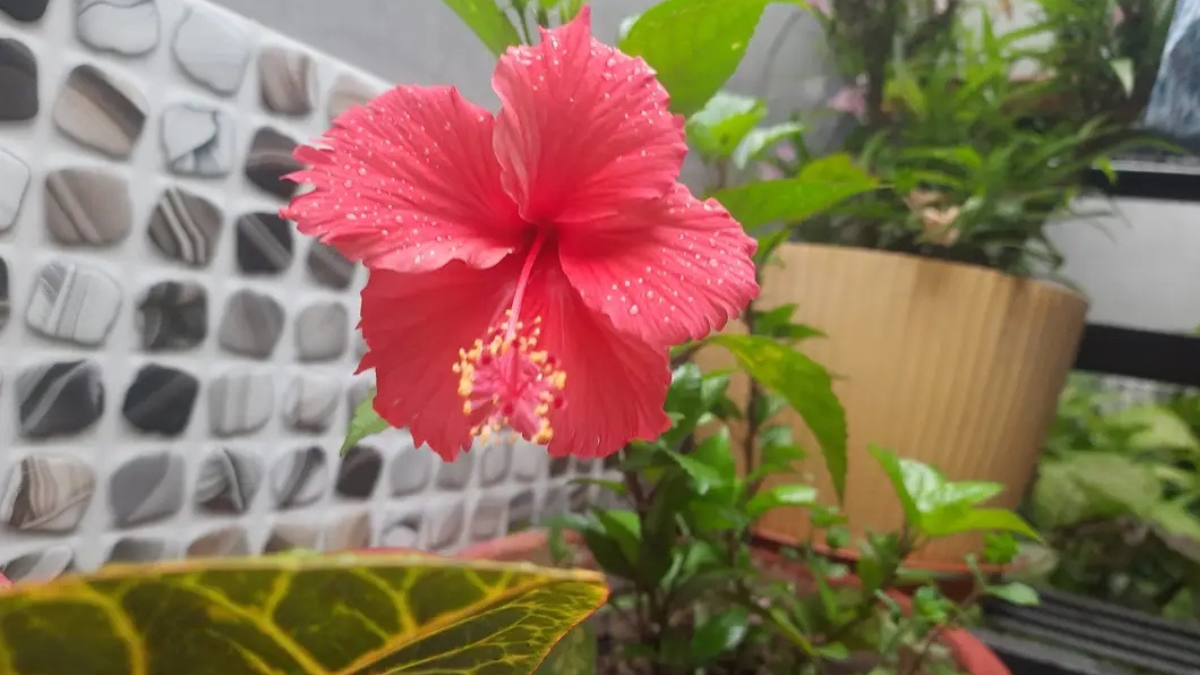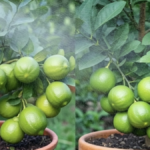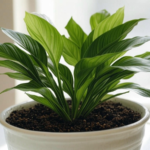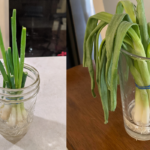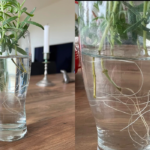How to care Hibiscus plant is simple if you provide the right balance of water, sunlight, and soil. This flowering shrub is one of the most popular plants in Indian homes and gardens because of its big, colorful flowers and low-maintenance nature.
I have grown hibiscus plants in pots and directly in the soil for many years, and from my experience, I can say this plant can bloom almost throughout the year if cared for properly. Hibiscus brings beauty, positivity, and freshness to any garden. In this guide, I will share step-by-step hibiscus plant care tips, based on my own gardening journey.
IN THIS ARTICLE
About Hibiscus Plant
The hibiscus is a tropical and subtropical shrub that produces large, bright, and eye-catching flowers. In India, hibiscus is also considered sacred and is offered in temples, especially the red hibiscus which is used in puja for Goddess Kali and Lord Ganesha.
| Feature | Details |
|---|---|
| Plant type | Flowering shrub |
| Best location | Pots, balcony, terrace, garden beds |
| Flower colors | Red, yellow, pink, white, orange, purple |
| Bloom season | Year-round in warm climates |
| Life span | Many years with good care |
| Uses | Ornamental, religious, herbal (hibiscus tea, hair oil) |
There are many varieties like Hibiscus rosa-sinensis (Chinese hibiscus), double hibiscus, and hybrids with unique flower shapes.
Quick Tips for How to Care Hibiscus Plant
- Provide 6–8 hours of direct sunlight daily.
- Use loose, well-draining soil with compost.
- Water hibiscus when the top soil becomes dry.
- Add fertilizer rich in potassium and phosphorus every 2 weeks.
- Regular pruning increases blooms.
- Protect from pests like aphids, whiteflies, and mealybugs.
- Propagate easily through stem cuttings.
My Experience with Hibiscus Watering
In the beginning, I gave too much water to my hibiscus, and the leaves started turning yellow. Later I understood that hibiscus needs moist but not soggy soil.
- In summer, I water daily or every alternate day.
- In winter, watering 2–3 times a week is enough.
- I always check the soil with my finger—if the top 1–2 inches are dry, I water immediately.
Tip: Hibiscus plants prefer rainwater or soft water. If your tap water has chlorine or salt, let it sit overnight before using.
Best Soil for Hibiscus Plant
Good soil is the foundation of hibiscus plant care. I prepare my own soil mix at home for better results.
- 40% garden soil
- 30% compost or cow dung manure
- 20% sand or perlite (for drainage)
- 10% cocopeat (for moisture retention)
This mix provides both nutrients and drainage, which hibiscus roots love. In clay soil areas, I add more sand to prevent root rot.
Sunlight Needs of Hibiscus
Hibiscus is a sun-loving plant. The plants in my garden that receive more sun always bloom better.
- Needs 6–8 hours of direct sunlight daily.
- Indoor hibiscus should be kept near a south-facing window or balcony.
- In very hot summers, I give my hibiscus partial shade in afternoon to protect from leaf burn.
Without sunlight, hibiscus plants may grow leaves but won’t produce many flowers.
Temperature and Humidity
Being a tropical plant, hibiscus loves warm and humid weather.
- Ideal temperature: 18°C to 32°C
- Best humidity: 50–70%
- In dry climates, I spray water mist on leaves.
- In winter, I keep my potted hibiscus near walls or indoors to protect from frost damage.
Fertilizer for Hibiscus
At first, my hibiscus gave only a few flowers. Then I learned hibiscus is a heavy feeder and needs fertilizer regularly.
- Use liquid fertilizer or compost tea every 2 weeks.
- Add cow dung manure or vermicompost once a month.
- Best fertilizer should be high in potassium and phosphorus for more flowers.
- Avoid too much nitrogen—it gives only green leaves and no flowers.
Some gardeners also use banana peel fertilizer at home for hibiscus, which works well because it is rich in potassium.
My Story of Hibiscus Pruning
One year, my hibiscus grew tall with long branches but gave very few flowers. I tried pruning, cutting the old branches and shaping the plant. Within a few weeks, fresh green shoots appeared, and soon the plant was full of flowers.
- Best time to prune hibiscus: late winter or early spring.
- Remove dry, weak, or diseased branches.
- Trim long branches to keep plant bushy.
- Pinch off old flowers to encourage new buds.
Pruning not only improves flowering but also keeps the hibiscus plant healthy.
Propagation of Hibiscus Plant
I have gifted many hibiscus plants to my friends by propagating from stem cuttings. It is simple and cost-free.
- Take a 6-inch cutting from a healthy stem.
- Remove lower leaves and dip the stem in rooting hormone (optional).
- Plant it in cocopeat or sandy soil.
- Keep in partial shade and water lightly.
- In 3–4 weeks, roots develop, and the plant can be shifted to a bigger pot.
This is the easiest way to multiply hibiscus plants at home.
Indoor Hibiscus vs Outdoor Hibiscus
- Indoor hibiscus: Needs a bright sunny window, regular misting, and light pruning to manage size.
- Outdoor hibiscus: Thrives in full sunlight, grows bigger, and blooms more freely.
In my home, the hibiscus kept outside always produces more flowers than the one kept indoors.
Common Hibiscus Problems and Solutions
Over the years, I faced many problems with hibiscus plants. Here’s a list of common issues and how I solved them:
| Problem | Cause | My Solution |
|---|---|---|
| Yellow leaves | Overwatering or poor soil | Reduced water, improved soil mix |
| No flowers | Lack of sunlight or nutrients | Moved to sunny spot, added fertilizer |
| Bud drop | Stress, pests, or dry soil | Regular watering, neem oil spray |
| Aphids & mealybugs | Pest attack | Weekly neem oil spray |
| Root rot | Excess water in soil | Repotted with sandy, well-draining soil |
Benefits of Growing Hibiscus Plant
From my personal experience, hibiscus gives not only beauty but also health and cultural benefits:
- Ornamental: Makes garden colorful and lively.
- Religious: Red hibiscus is sacred in Hindu rituals.
- Medicinal: Hibiscus tea is rich in antioxidants.
- Hair care: Hibiscus flowers are used in natural hair oil.
Conclusion
In my gardening journey, I learned that hibiscus plant care is not difficult if you follow the basics. Give enough sunlight, proper watering, nutrient-rich soil, and regular pruning, and the hibiscus will reward you with bright, beautiful flowers all year round. Whether you grow it indoors or outdoors, hibiscus brings both beauty and positivity to the home garden.
If you want a low-maintenance but stunning flowering plant, hibiscus is one of the best choices.
How to Care for Endless Summer Hydrangea – Full Guide for Healthy Blooms
